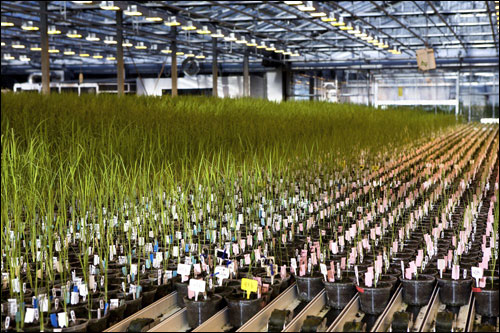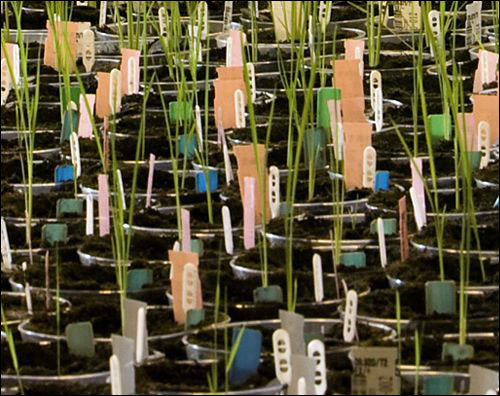Jun 14, 2010Humans have been breeding crops for millennia, but in the past two decades, technology has enabled researchers to reach into genetic code of plants in order to make tiny tweaks they hope will help farmers produce more food, use fewer pesticides or fertilizer, and achieve greater profits.
Though genetic engineering has been a well-established technology for many years, tweaking a plant's genes can have unexpected results, and the only way to know for sure what the effects will be is to grow the modified plant in a controlled setting. At CropDesign, a BASF subsidiary based in Gent, Belgium, researchers are attempting to accelerate the process using automation and radio frequency identification.

To measure the impact of changing genes in rice plants—to test if the modifications can, for example, make them more resistant to drought and heat, or more productive—CropDesign carefully tracks every plant over the course of its four-month growth cycle. To that end, automated scanners and cameras photograph and measure the size of each plant's leaves, the growth of its root system, and the development of the flowers and seeds it produces. The operation, known as TraitMill, is one of the largest of its kind in the world, the company reports, and automation is a key to its success.
That automation would be impossible without RFID technology, claims Frederik Leyns, CropDesign's technical developer. In the firm's 2,400-square-meter (25,800-square-foot) greenhouse, a conveyor system transports each plant at least once per week to one of five scanning stations, where a robot photographs and scans it hundreds of times from half a dozen angles. The plant is then returned to its spot in the greenhouse. To track the plants throughout the entire process, CropDesign relies on an RFID tag associated with each pot. "There are 35,000 plants passing through the system each week, so there's no way to do it by hand," he states. "The plants make a nice tour throughout the greenhouse, and at each station, we have a transponder reader."
The genetically modified rice plants spend up to four months in the automated greenhouse. The unique ID number encoded to each plant's RFID transponder is automatically linked to images and other data specific to that plant in the research center's computers. That means researchers can obtain rapid feedback regarding what their genetic tweaks are doing to the plant.
If CropDesign's staff wants to take a closer look, the RFID system can also be utilized to locate a particular plant within the warehouse. "When we take samples or images, we know exactly which part of the warehouse to look for the plant," Leyns says. When a plant reaches maturity, its seeds are harvested, labeled with a bar code, analyzed and stored—and its RFID transponder, about the size of a credit card, is removed and reassigned to a new plant.
Since at least 2002, CropDesign has tracked plants by means of low-frequency (LF) passive RFID transponders coated in epoxy resin, which was intended to protect the circuitry from the greenhouse's high moisture and humidity levels. Temperatures within the facility range from 82 degrees Fahrenheit (28 degrees Celsius) in the winter to more than 100 degrees (38 degrees Celsius) in the summer, and the relative humidity is between 70 and 100 percent—perfect for rice plants, Leyns says, but tough on electrical equipment.

According to Leyns, the unusually harsh conditions have had some unexpected consequences. The transponders' read range has faded by 5 to 10 percent annually, he says, perhaps because hairline cracks in the epoxy may have allowed moisture to seep in. "When we first saw the phenomenon, people didn't believe it," he recalls. "Most likely, humidity is getting inside the transponder, which leads to oxidation." Moreover, he adds, the greenhouse is crowded with machinery that often interferes with the LF signals of the transponders and readers.
To improve performance, CropDesign worked with a technical school in nearby Kortrijk to design and install a high-frequency (HF) system complying with the ISO 15693 standard. The new 13.56 MHz passive transponders will be coated with a PET plastic that Leyns hopes will prove to be more durable than the epoxy. "I'm not naïve," he states, "but since the reading distance [of HF transponders] is much larger, I can afford some losses."
CropDesign is presently phasing in the HF RFID transponders and readers, Leyns says, and the system should be in place by the end of the summer. He says he hopes it will make an efficient system even better.

